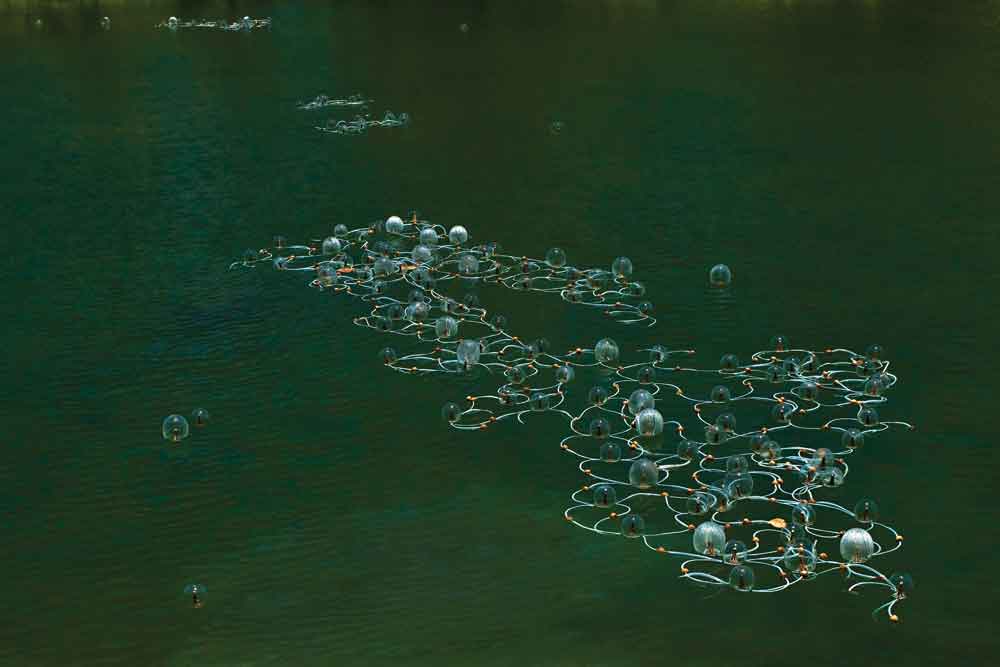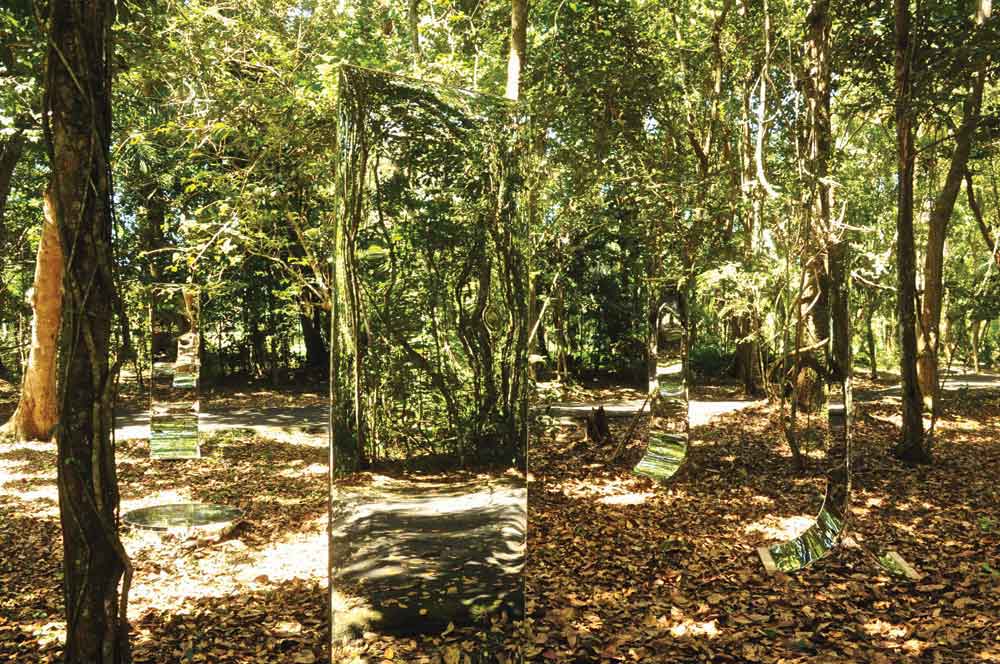« Reviews
Archives of the Ephemeral: Ten Artistic Interventions in Nature
Universidad del Sagrado Corazón - San Juan, Puerto Rico
Curated by Laura Bravo
Organized by Fist_Art Foundation
By Irina Leyva-Pérez
Nature has always fascinated humans, first as a response to the symbiotic relationship between primal need and survival, and later becoming admiration. Art history is full of examples of artworks inspired by nature, including in a traditional manner such as landscapes, and more recently in a more cutting-edge way such as land art. In the late 1960s, Robert Smithson (1938-1973) coined the term and produced the iconic pieces that today serve as obligatory reference in this field.
Taking this movement as a point of departure, many contemporary artists have made, and are still making, works related to nature. It is in this context that Fist_ Art emerges as a nonprofit foundation based in Dorado, Puerto Rico. The foundation is headed by Carolina Stubbe, who created it in 2008 as an educational-oriented organization as well as an outlet for land art projects in the region. Stubbe is a Venezuelan-born museologist whose life path took her to Dorado. Her involvement with art and culture made her aware of the need in this community for an arts organization. This need, in addition to her expertise and love of art and nature, made the foundation possible. In her view, “Our relationship with nature goes from contemplation to harmonious use to exploitation and destruction. Intervening through art gives us the opportunity to ask ourselves questions about what is on the surface of what we call nature and what lies beneath it.”

Dhara Rivera, Homenaje al Ptreocarpus, 2009, 96” x 64”. Photo: Johnny Betancourt. All images are courtesy of Fist_Art Foundation.
Since its creation, Fist_ Art has achieved an important position in the visual arts in Puerto Rico through its seminal work and for its unique profile. The organization objective is to promote land art through site-specific projects in collaboration with local and international artists. The foundation carries out an average of three to four projects annually, and “Archives of the Ephemeral” is the product of four years of intense work, resulting in 10 distinct projects. This unusual exhibition brought together the works of 10 artists from four different countries, including seven from Puerto Rico: Rafael Trelles, Dhara Rivera, Pseudo Mero, Vimarie Serrano, Manuel Rodríguez, Jaime and Javier Suárez and Quintín Rivera Toro; Teresa Mulet from Venezuela; Myeongbeom Kim from Korea; and Miya Ando from the United States. Each artist conveyed their ideas of communion with nature, bringing in also philosophical and ecological concepts. The 10 interventions were documented through photographs also made by artists as a way of keeping a record of these creations, which were later exhibited at the Universidad del Sagrado Corazón’s art room.
The invasion of cities over nature is a theme that has dominated science fiction, often presented as an apocalyptic view of the end of the world. The reality is that urban spaces are threatening the survival of nature in many places. Pseudo Mero’s work comments on this process in the form of a mural made with the language of graffiti in the middle of the landscape.
The Regeneration Circle by Vimarie Serrano and An Unoccupied Space by Quintín Rivera Toro are based on similar principles, creating a sort of alternative reality within the landscape as another dimension. Serrano’s strategic use of mirrors produces an interesting visual game in which reality is altered as a response to an emotional need. An Unoccupied Space creates a similar effect by placing an image within an image, in this case clouds that remind us Magritte’s paintings. As an homage to the initial sacramental relationship that humans established with nature, twins Jaime and Javier Suárez made a piece using the ancient practice of painting with sand. In this instance, their concave circle is imbedded in the earth in a ritualistic way.
Trelles’ piece, The Forbidden Tree, makes biblical references as well as ecological ones. A brilliant red tree is a metaphor for original sin and at the same time is a call of attention towards deforestation and the natural changes in our world.
Water is perhaps the most important element in nature, and the artists made sure to incorporate it in their works, as Manuel Rodríguez, Myeongbeom Kim, Miya Ando and Dhara Rivera based their pieces on this vital element. Rodríguez’s According to Buoyancy replicates the sinuosity of the surrounding landscape. His floating containers made in an electric blue are mirrored in the reflecting water. The artist focuses on the delicate balance and synergistic relationship between the water and objects. This is echoed by Kim in his Boat Tree, another piece that features plants floating in water. Both pieces are commentaries about the synchronicity between land and water, and man and his environment, but ultimately it is referring to processes linked to migration and reproduction.
On the other hand, Rivera uses the water as a backdrop from an aesthetic point of view. Her piece, Homenaje al Ptreocarpus (Homage to the Ptreocarpus), is made up by 165 glass spheres, each containing a small piece of a trunk of a Pterocarpus tree. This is her way of paying tribute to the autochthonous flora and lamenting the extinction of the tree, which was once vital to Puerto Rico’s ecosystem.
Ando’s Obon consists of 1,000 hand-painted Ficus Religiosa (Bodhi) skeleton leaves floating in water. She is using the phenomenon of bioluminescence to talk about philosophical ideas such as the transitory state of life. The image of the floating fluorescent blue and green leaves, like a scene from the movie Avatar, underscores the delicacy and luminosity of this natural process.
Teresa Mulet’s en (re) takes a conceptual approach that questions the processes that link humans and nature in contemporary society. She plays with the morphology of words and invokes practices such as recycling or reclaiming, hence the use of “re” in apostrophes as the title.
Despite the obvious differences among them and their work, these 10 artists look at nature as a point of departure and an end at the same time. Their “interventions” are creative ways of calling our attention towards these beliefs. In their works they study the essential relationship between humans and nature, therefore completing a cycle of renovation from within.
(October 11 - November 15, 2012)
Irina Leyva-Pérez is an art historian and writer based in Miami. She is curator of Pan American Art Projects Gallery.
Filed Under: Reviews






































Leave a Reply
You must be logged in to post a comment.